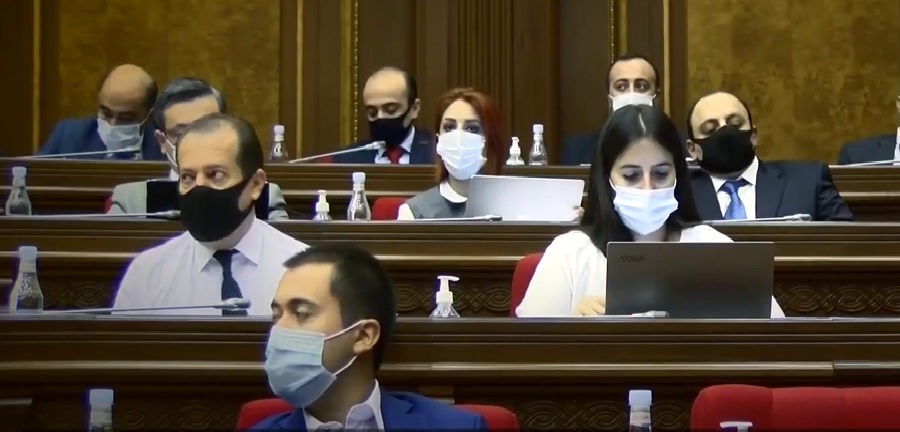The 15 February 2010 Decision of the National Commission for Television and Radio (“NCTR”) “On Approving the Criteria on Erotic Television and Radio Programs, Horror Films and Films Containing Obvious Violence, and Content that is Potentially Harmful for the Health, Education, and Intellectual and Physical Development of Minors” was published in the Newsletter of Public Agency Regulations of the Republic of Armenia on 2 March 2010. Hence, the controversial criteria have become effective. From now on, as per Article 24 of the Republic of Armenia Law on Television and the Radio, such content may be broadcast only from midnight to 6:00am.
Though leaders of virtually all the broadcast media tacitly consented to what may be considered a new “whip” that may be used against television and radio companies, this paper attempts to present how the Criteria pose bottlenecks and impediments to their activities.
As was stressed during the discussion of the draft, the Criteria should have not allowed any leeway for discretionary decision-making. Whereas, the published Criteria provide ample opportunity for arbitrariness: they may be enforced selectively to silence or punish certain unwanted broadcasters.
In order not to seem groundless, here are some examples.
Paragraph 2 of the Criteria reads:
“A film is considered a “horror film” or a “film containing obvious violence,” if it shows (a) scenes inciting a sense of fear, alarm, despair, or fright.”
World cinema, including the Soviet film industry, has created numerous films on war topics, most of which have “scenes inciting fright,” such as battles, bomb explosions, blood, corpses, and the like. Besides war films, there are plenty of other examples of films, including children’s films, that would fall under this definition. For instance, the well-known film “Jumanji” for children is full of horror scenes. As the notion of “scenes inciting fear, alarm, despair, or fright” are highly subjective (for example, the scene of a battlefield after the battle may horrify the NCTR members, but not thousands of viewers), the NCTR might conclude that broadcasting any such film before midnight would violate the Criteria (the NCTR might as well conclude that such a film does not breach the Criteria, depending on how much a particular television company is to the liking of “the tops”). “Incitement of a sense of fear or alarm” is an immeasurable criterion. To be slightly more rigorous, it is not a criterion altogether.
This paper does not reflect on the criteria concerning erotic television and radio programs, because the NCTR only sets forth what such programs may show and what not, failing to define the very notion. No further comments are necessary here.
Paragraph 3 of the Criteria causes the most concern. It reads:
“3. Content shall be deemed potentially harmful for the health, education, and intellectual and physical development of minors, if it:
a) Distorts the historical facts incorporated in the public education curriculum and programs, or belittles and discredit national figures and the cultural heritage;
b) Belittles and discredits the National Church and the values preached by it;
c) Denies the standards of morality, advocates for an immoral lifestyle, and belittles the role of education and upbringing;
d) Contributes to the proliferation of criminal practices, conduct, and jargon in society, or the romanticizing of criminal characters and lifestyles;
e) Displays or imitates a drug addict or alcoholic, failing to denounce drug addiction or alcoholism;
f) Ridicules or mockingly imitates persons with physical and mental disability; or
g) Contains vulgarity or foul language.”
To begin with sub-paragraph (a), it is unclear how a program presenting historical facts differently from the textbooks can negatively affect the intellectual or physical development or education of minors. Or, does any opinion diverging from the textbook content per seamount to distortion? Clearly, the unconditional imposition of dogmas has a much more negative effect on children’s education. Who is to compile a list of “national figures” and the “cultural heritage” that may not be “belittled” or “discredited” before midnight (but may after midnight)? What does “belittling” a national figure mean? Would pointing out such a figure’s mistakes amount to “belittlement”? And if one dislikes an institution that is considered “cultural heritage,” why should one have to wait until after midnight to express such dislike on television? Or, if one did express such dislike, how could it possibly harm children’s education? It is crystal clear that, if necessary, any program on history would be viewed under this “criterion” in order to punish the broadcasting station (if it has been decided to punish a particular station).
One could pose similar questions on each of the sub-paragraphs. For example, is it permitted to belittle the National Church after midnight? Can one belittle other churches any time of the day? Are they going to use the Roman balance, the bazaar scales, or the electronic precision balance to measure the extent of “romanticizing criminal characters or lifestyles” or the degree of “vulgarity”? Enough is enough. One cannot help asking what these people bore in mind when developing these absurd criteria.
One thing is clear: in a country where all of the broadcast media, with little exception, are controlled (more by the authorities than the NCTR), where any attempt to move right or left out of such control will be viewed as “attempted escape” and “rounds will be shot” without warning, this document is “the bullet” that will shoot down the one who tries to escape.
The devastation will affect us all, if there is anything at all left in the broadcast media to devastate.
MESROP HARUTYUNYAN
Expert, Committee to Protect Freedom of Expression








